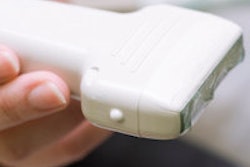Contaminated ultrasound gel caused a 2011 outbreak of Pseudomonas aeruginosa infection at Beaumont Health System in Michigan, according to an article published in the August issue of Infection Control and Hospital Epidemiology.
A research team led by Dr. Paul Chittick discovered an unusual cluster of P. aeruginosa in the cardiovascular surgery intensive care unit during routine infection control surveillance. Sixteen patients had become colonized or infected with the bacteria, which is known to increase the risk of bloodstream and respiratory infections in immune-compromised individuals.
The outbreak stemmed from bottles of ultrasound transmission gel used during cardiovascular surgery, according to the researchers. No further cases occurred after the gel was replaced with a sterile product (Infect Control Hosp Epidemiol, Vol. 34:8, pp. 850-853).
Cultures of gel from a bottle used in the operating room grew P. aeruginosa that was identical to the outbreak strain, and it was originally thought that the gel had become contaminated during use, according to the researchers. However, sealed bottles of gel also grew the same strain of P. aeruginosa, proving that the product was contaminated during the manufacturing process at the plant of Pharmaceutical Innovations, the researchers said.
As a result of this investigation, the U.S. Food and Drug Administration (FDA) issued a warning about the gel's risk of infection and instructed healthcare providers not to use the infected products.
The Beaumont investigators also recently published proposed guidelines in Infection Control and Hospital Epidemiology for the use of sterile versus nonsterile ultrasound gel. These first-ever guidelines in the U.S. include the need for sterile, single-dose ultrasound gel to be used for all invasive procedures, and they give appropriate storage and warming methods for the gel, according to the researchers.



















